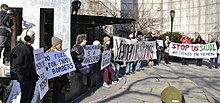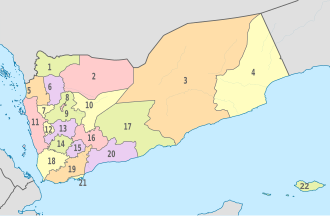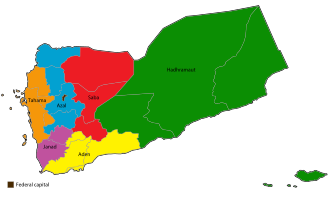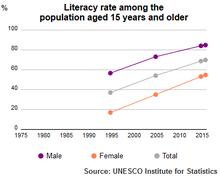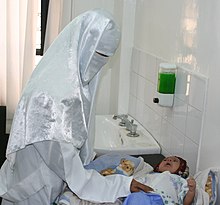Republic Of Yemen
Owing to its geographic location, Yemen has been at the crossroads of many civilisations for over 7,000 years. In 1200 BCE, the Sabaeans formed a thriving commercial kingdom that included parts of modern Ethiopia and Eritrea. In 275 CE, it was succeeded by the Himyarite Kingdom, which spanned much of Yemen's present-day territory and was heavily influenced by Judaism. Christianity arrived in the fourth century, followed by the rapid spread of Islam in the seventh century. Yemenite troops played a crucial role in early Islamic conquests. Various dynasties emerged between the 9th and 16th centuries. During the 19th century, the country was divided between the Ottoman and British empires. After World War I, the Kingdom of Yemen was established, which in 1962 became the Yemen Arab Republic (North Yemen) following a coup. In 1967, the British Aden Protectorate became the independent People's Democratic Republic of Yemen (South Yemen), the first and only officially socialist state in the Arab world. In 1990, the two Yemeni states united to form the modern Republic of Yemen, with Ali Abdullah Saleh serving as the first president until his resignation in 2012 in the wake of the Arab Spring.
Since 2011, Yemen has been enduring a political crisis, marked by street protests against poverty, unemployment, corruption, and President Saleh's plan to amend Yemen's constitution and eliminate the presidential term limit. By 2015, the country became engulfed by an ongoing civil war with multiple entities vying for governance, including the Presidential Leadership Council of the internationally recognized government, and the Houthi movement's Supreme Political Council. This conflict, which has escalated to involve various foreign powers, has led to a severe humanitarian crisis.
Yemen is one of the least developed countries in the world, facing significant obstacles to sustainable development, and is one of the poorest countries in the Middle East and North Africa. In 2019, the United Nations reported that Yemen had the highest number of people in need of humanitarian aid, amounting to about 24 million individuals, or nearly 75% of its population. As of 2020, Yemen ranked highest on the Fragile States Index and second-worst on the Global Hunger Index, surpassed only by the Central African Republic. Additionally, it has the lowest Human Development Index out of all non-African countries.
Etymology
The term Yamnat was first mentioned in the Old South Arabian inscriptions on the title of one of the kings of the second Himyarite Kingdom known as Shammar Yahri'sh. The term probably referred to the southwestern coastline of the Arabian Peninsula and the southern coastline between Aden and Hadhramaut. Historical Yemen included much greater territory than the current nation, stretching from northern 'Asir in southwestern Saudi Arabia to Dhofar in southern Oman.
One etymology derives Yemen from ymnt, meaning literally "South [of the Arabian Peninsula]", and significantly plays on the notion of the land to the right (𐩺𐩣𐩬). Other sources claim that Yemen is related to yamn or yumn, meaning "felicity" or "blessed", as much of the country is fertile, in contrast to the barren land of most of Arabia. The Romans called it Arabia Felix ("happy" or "fortunate" Arabia"), as opposed to Arabia Deserta ("deserted Arabia"). Latin and Greek writers referred to ancient Yemen as "India", which arose from the Persians calling the Abyssinians whom they came into contact with in South Arabia by the name of the black-skinned people who lived next to them.
History
Yemen has existed at the crossroads of its civilisations for more than 7,000 years. The country was home to figures such as the Queen of Sheba who brought a caravan of gifts for King Solomon. For centuries, it became a primary producer of coffee exported in the port of Mocha. From its conversion to Islam in the 7th century, Yemen became a center of Islamic learning, and much of its architecture survived until modern times.
Ancient history

With its long sea border between eastern and western civilizations, Yemen has long existed at a crossroads of cultures with a strategic location in terms of trade on the west of the Arabian Peninsula. Large settlements for their era existed in the mountains of northern Yemen as early as 5000 BC. The Sabaean Kingdom came into existence in at least the 12th century BC. The four major kingdoms or tribal confederations in South Arabia were Saba, Hadhramaut, Qataban, and Ma'in.
Sabaʾ (Arabic: سَـبَـأ) is thought to be biblical Sheba and was the most prominent federation. The Sabaean rulers adopted the title Mukarrib generally thought to mean unifier, or a priest-king, or the head of the confederation of South Arabian kingdoms, the "king of the kings". The role of the Mukarrib was to bring the various tribes under the kingdom and preside over them all. The Sabaeans built the Great Dam of Marib around 940 BC. The dam was built to withstand the seasonal flash floods surging down the valley.
By the third century BC, Qataban, Hadhramaut, and Ma'in became independent from Saba and established themselves in the Yemeni arena. Minaean rule stretched as far as Dedan, with their capital at Baraqish. The Sabaeans regained their control over Ma'in after the collapse of Qataban in 50 BC. By the time of the Roman expedition to Arabia Felix in 25 BC, the Sabaeans were once again the dominating power in Southern Arabia. Aelius Gallus was ordered to lead a military campaign to establish Roman dominance over the Sabaeans.
The Romans had a vague and contradictory geographical knowledge about Arabia Felix. A Roman army of 10,000 men was defeated before reaching Marib. Strabo's close relationship with Aelius Gallus led him to attempt to justify his friend's defeat in his writings. It took the Romans six months to reach Marib and 60 days to return to Egypt. The Romans blamed their Nabataean guide and executed him for treachery. No direct mention in Sabaean inscriptions of the Roman expedition has yet been found.
After the Roman expedition (perhaps earlier) the country fell into chaos, and two clans, namely Hamdan and Himyar, claimed kingship, assuming the title King of Sheba and Dhu Raydan. Dhu Raydan, i.e., Himyarites, allied themselves with Aksum in Ethiopia against the Sabaeans. The chief of Bakil and king of Saba and Dhu Raydan, El Sharih Yahdhib, launched successful campaigns against the Himyarites and Habashat, i.e., Aksum. El Sharih took pride in his campaigns and added the title Yahdhib to his name, which means "suppressor"; he used to kill his enemies by cutting them to pieces. Sana'a came into prominence during his reign, as he built the Ghumdan Palace as his place of residence.
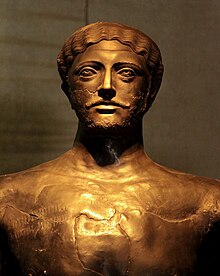

The Himyarites annexed Sana'a from Hamdan around 100 AD. Hashdi tribesmen rebelled against them and regained Sana'a around 180. Shammar Yahri'sh had conquered Hadhramaut, Najran, and Tihamah by 275, thus unifying Yemen and consolidating Himyarite rule. The Himyarites rejected polytheism and adhered to a consensual form of monotheism called Rahmanism.
In 354, Roman Emperor Constantius II sent an embassy headed by Theophilos the Indian to convert the Himyarites to Christianity. According to Philostorgius, the mission was resisted by local Jews. Several inscriptions have been found in Hebrew and Sabaean praising the ruling house in Jewish terms for "...helping and empowering the People of Israel."
According to Islamic traditions, King As'ad the Perfect mounted a military expedition to support the Jews of Yathrib. Abu Kariba As'ad, as known from the inscriptions, led a military campaign to central Arabia or Najd to support the vassal Kingdom of Kinda against the Lakhmids. However, no direct reference to Judaism or Yathrib was discovered from his lengthy reign. Abu Kariba died in 445, having reigned for almost 50 years. By 515, Himyar became increasingly divided along religious lines and a bitter conflict between different factions paved the way for an Aksumite intervention. The last Himyarite king Ma'adikarib Ya'fur was supported by Aksum against his Jewish rivals. Ma'adikarib was Christian and launched a campaign against the Lakhmids in southern Iraq, with the support of other Arab allies of Byzantium. The Lakhmids were a bulwark of Persia, which was intolerant to a proselytizing religion like Christianity.
After the death of Ma'adikarib Ya'fur around 521, a Himyarite Jewish warlord called Dhu Nuwas rose to power. Emperor Justinian I sent an embassy to Yemen. He wanted the officially Christian Himyarites to use their influence on the tribes in inner Arabia to launch military operations against Persia. Justinian I bestowed the "dignity of king" upon the Arab sheikhs of Kindah and Ghassan in central and northern Arabia. From early on, Roman and Byzantine policy was to develop close links with the powers of the coast of the Red Sea. They were successful in converting Aksum and influencing their culture. The results concerning to Yemen were rather disappointing.
A Kendite prince called Yazid bin Kabshat rebelled against Abraha and his Arab Christian allies. A truce was reached once the Great Dam of Marib had suffered a breach. Abraha died around 570. The Sasanid Empire annexed Aden around 570. Under their rule, most of Yemen enjoyed great autonomy except for Aden and Sana'a. This era marked the collapse of ancient South Arabian civilization, since the greater part of the country was under several independent clans until the arrival of Islam in 630.
Middle Ages
Advent of Islam and the three dynasties
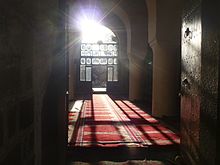
Muhammad sent his cousin Ali to Sana'a and its surroundings around 630. At the time, Yemen was the most advanced region in Arabia. The Banu Hamdan confederation was among the first to accept Islam. Muhammad sent Muadh ibn Jabal, as well to Al-Janad, in present-day Taiz, and dispatched letters to various tribal leaders. Major tribes, including Himyar, sent delegations to Medina during the "year of delegations" around 630–631. Several Yemenis accepted Islam before 630, such as Ammar ibn Yasir, Al-Ala'a Al-Hadrami, Miqdad ibn Aswad, Abu Musa Ashaari, and Sharhabeel ibn Hasana. A man named 'Abhala ibn Ka'ab Al-Ansi expelled the remaining Persians and claimed he was a prophet of Rahman. He was assassinated by a Yemeni of Persian origin called Fayruz al-Daylami. Christians, who were mainly staying in Najran along with Jews, agreed to pay jizyah (Arabic: جِـزْيَـة), although some Jews converted to Islam, such as Wahb ibn Munabbih and Ka'ab al-Ahbar.
Yemen was stable during the Rashidun Caliphate. Yemeni tribes played a pivotal role in the Islamic expansion into Egypt, Iraq, Persia, the Levant, Anatolia, North Africa, Sicily, and Andalusia. Yemeni tribes who settled in Syria contributed significantly to the solidification of Umayyad rule, especially during the reign of Marwan I. Powerful Yemenite tribes such as Kinda were on his side during the Battle of Marj Rahit.
Muhammad ibn Abdullah ibn Ziyad founded the Ziyadid dynasty in Tihamah around 818. The state stretched from Haly (in present-day Saudi Arabia) to Aden. They nominally recognized the Abbasid Caliphate but ruled independently from Zabid. By virtue of its location, they developed a special relationship with Abyssinia. The chief of the Dahlak islands exported slaves, as well as amber and leopard hides, to the ruler of Yemen. They controlled only a small portion of the coastal strip in Tihamah along the Red Sea, and never exercised control over the highlands and Hadhramaut. A Himyarite clan called the Yufirids established their rule over the highlands from Saada to Taiz, while Hadhramaut was an Ibadi stronghold and rejected all allegiance to the Abbasids in Baghdad.
The first Zaidi imam, Yahya ibn al-Husayn, arrived in Yemen in 893. He was a religious cleric and judge who was invited to come to Saada from Medina to arbitrate tribal disputes. Yahya persuaded local tribesmen to follow his teachings. The sect slowly spread across the highlands, as the tribes of Hashid and Bakil, later known as "the twin wings of the imamate", accepted his authority. He founded the Zaidi imamate in 897. Yahya established his influence in Saada and Najran. He also tried to capture Sana'a from the Yufirids in 901 but failed miserably.
Sulayhid dynasty (1047–1138)
The Sulayhid dynasty was founded in the northern highlands around 1040; at the time, Yemen was ruled by different local dynasties. In 1060, Ali ibn Muhammad Al-Sulayhi conquered Zabid and killed its ruler Al-Najah, founder of the Najahid dynasty. His sons were forced to flee to Dahlak. Hadhramaut fell into Sulayhid hands after their capture of Aden in 1162.
By 1063, Ali had subjugated Greater Yemen. He then marched toward Hejaz and occupied Makkah. Ali was married to Asma bint Shihab, who governed Yemen with her husband. The Khutba during Friday prayers was proclaimed in both her husband's name and hers. No other Arab woman had this honor since the advent of Islam.
Ali al-Sulayhi was killed by Najah's sons on his way to Mecca in 1084. His son Ahmed Al-Mukarram led an army to Zabid and killed 8,000 of its inhabitants. He later installed the Zurayids to govern Aden. al-Mukarram, who had been afflicted with facial paralysis resulting from war injuries, retired in 1087 and handed over power to his wife Arwa al-Sulayhi. Queen Arwa moved the seat of the Sulayhid dynasty from Sana'a to Jibla, a small town in central Yemen near Ibb. She sent Ismaili missionaries to India, where a significant Ismaili community was formed that exists to this day.
Queen Arwa continued to rule securely until her death in 1138. She is still remembered as a great and much-loved sovereign, as attested in Yemeni historiography, literature, and popular lore, where she is referred to as Balqis al-sughra ("the junior queen of Sheba"). Shortly after Arwa's death, the country was split between five competing petty dynasties along religious lines. The Ayyubid dynasty overthrew the Fatimid Caliphate in Egypt. A few years after their rise to power, Saladin dispatched his brother Turan Shah to conquer Yemen in 1174.
Ayyubid conquest (1171–1260)
Turan Shah conquered Zabid from the Mahdids in 1174, then marched toward Aden in June and captured it from the Zurayids. The Hamdanid sultans of Sana'a resisted the Ayyubid in 1175, and the Ayyubids did not manage to secure Sana'a until 1189. The Ayyubid rule was stable in southern and central Yemen, where they succeeded in eliminating the ministates of that region, while Ismaili and Zaidi tribesmen continued to hold out in several fortresses.
The Ayyubids failed to capture the Zaydis stronghold in northern Yemen. In 1191, Zaydis of Shibam Kawkaban rebelled and killed 700 Ayyubid soldiers. Imam Abdullah bin Hamza proclaimed the imamate in 1197 and fought al-Mu'izz Ismail, the Ayyubid Sultan of Yemen. Imam Abdullah was defeated at first but was able to conquer Sana'a and Dhamar in 1198, and al-Mu'izz Ismail was assassinated in 1202.
Abdullah bin Hamza carried on the struggle against the Ayyubid until his death in 1217. After his demise, the Zaidi community was split between two rival imams. The Zaydis were dispersed, and a truce was signed with the Ayyubid in 1219. The Ayyubid army was defeated in Dhamar in 1226. Ayyubid Sultan Mas'ud Yusuf left for Mecca in 1228, never to return. Other sources suggest that he was forced to leave for Egypt instead in 1223.
Rasulid dynasty (1229–1454)

The Rasulid dynasty was established in 1229 by Umar ibn Rasul, who was appointed deputy governor by the Ayyubids in 1223. When the last Ayyubid ruler left Yemen in 1229, Umar stayed in the country as caretaker. He subsequently declared himself an independent king by assuming the title "al-Malik Al-Mansur" (the king assisted by Allah).
Umar first established himself at Zabid, then moved into the mountainous interior, taking the important highland centre Sana'a. However, the Rasulid capitals were Zabid and Taiz. He was assassinated by his nephew in 1249. Omar's son Yousef defeated the faction led by his father's assassins and crushed several counterattacks by the Zaydi imams who still held on in the northern highland. Mainly because of the victories he scored over his rivals, he assumed the honorific title "al-Muzaffar" (the victorious).
After the fall of Baghdad to the Mongols in 1258, al-Muzaffar Yusuf I appropriated the title of caliph. He chose the city of Taiz to become the political capital of the kingdom because of its strategic location and proximity to Aden. The Rasulid sultans built numerous Madrasas to solidify the Shafi'i school of thought, which is still the dominant school of jurisprudence amongst Yemenis today. Under their rule, Taiz and Zabid became major international centres of Islamic learning. The kings were educated men in their own right, who not only had important libraries but also wrote treatises on a wide array of subjects, ranging from astrology and medicine to agriculture and genealogy.
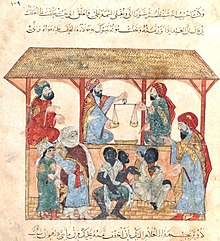
They had a difficult relationship with the Mamluks of Egypt because the latter considered them a vassal state. Their competition centred over the Hejaz and the right to provide kiswa of the Ka'aba in Mecca. The dynasty became increasingly threatened by disgruntled family members over the problem of succession, combined with periodic tribal revolts, as they were locked in a war of attrition with the Zaydi imams in the northern highlands. During the last 12 years of Rasulid rule, the country was torn between several contenders for the kingdom. The weakening of the Rasulid provided an opportunity for the Banu Taher clan to take over and establish themselves as the new rulers of Yemen in 1454 AD.
Tahirid dynasty (1454–1517)

The Tahirids were a local clan based in Rada'a. They built schools, mosques, and irrigation channels, as well as water cisterns and bridges in Zabid, Aden, Rada'a, and Juban. Their best-known monument is the Amiriya Madrasa in Rada' District, which was built in 1504. The Tahirids were too weak either to contain the Zaydi imams or to defend themselves against foreign attacks.
Realizing how rich the Tahirid realm was, the Mamluks decided to conquer it. The Mamluk army, with the support of forces loyal to Zaydi Imam Al-Mutawakkil Yahya Sharaf ad-Din, conquered the entire Tahirid realm but failed to capture Aden in 1517. The Mamluk victory was short-lived. The Ottoman Empire conquered Egypt, hanging the last Mamluk Sultan in Cairo. The Ottomans had not decided to conquer Yemen until 1538. The Zaydi highland tribes emerged as national heroes by offering stiff, vigorous resistance to the Turkish occupation. The Mamluks tried to attach Yemen to Egypt and the Portuguese led by Afonso de Albuquerque, occupied the island of Socotra and made an unsuccessful attack on Aden in 1513.
Portuguese
Starting in the 15th century, Portugal intervened, dominating the port of Aden for about 20 years and maintaining a fortified enclave on the island of Socotra during this period. From the 16th century, the Portuguese posed an immediate threat to Indian Ocean trade. The Mamluks therefore sent an army under Hussein al-Kurdi to fight the intruders The Mamluk sultan went to Zabid in 1515 and entered into diplomatic talks with the Tahiri sultan 'Amir bin Abdulwahab for money that would be needed for the jihad against the Portuguese. Instead of confronting them, the Mamluks, who were running out of food and water, landed on the coast of Yemen and began harassing the villagers of Tihamah to obtain the supplies they needed.
The interest of Portugal on the Red Sea consisted on the one hand of guaranteeing contacts with a Christian ally in Ethiopia and on the other of being able to attack Mecca and the Arab territories from the rear, while still having absolute dominance over trade of spices, the main intention was to dominate the commerce of the cities on the coast of Africa and Arabia. To this end, Portugal sought to influence and dominate by force or persuasion all the ports and kingdoms that fought among themselves. It was common for Portugal to keep under its influence the Arab allies that were interested in maintaining independence from other Arab states in the region.
Modern history
The Zaydis and Ottomans
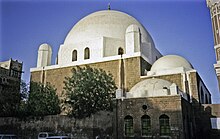
The Ottomans had two fundamental interests to safeguard in Yemen: The Islamic holy cities of Mecca and Medina, and the trade route with India in spices and textiles—both threatened, and the latter virtually eclipsed, by the arrival of the Portuguese in the Indian Ocean and the Red Sea in the early 16th century. Hadım Suleiman Pasha, the Ottoman governor of Egypt, was ordered to command a fleet of 90 ships to conquer Yemen. The country was in a state of incessant anarchy and discord as Pasha described it by saying:
Yemen is a land with no lord, an empty province. It would be not only possible but easy to capture, and should it be captured, it would be master of the lands of India and send every year a great amount of gold and jewels to Constantinople.
Imam al-Mutawakkil Yahya Sharaf ad-Din ruled over the northern highlands including Sana'a, while Aden was held by the last Tahiride Sultan 'Amir ibn Dauod. Pasha stormed Aden in 1538, killing its ruler, and extended Ottoman authority to include Zabid in 1539 and eventually Tihamah in its entirety. Zabid became the administrative headquarters of Yemen Eyalet. The Ottoman governors did not exercise much control over the highlands. They held sway mainly in the southern coastal region, particularly around Zabid, Mocha, and Aden. Of 80,000 soldiers sent to Yemen from Egypt between 1539 and 1547, only 7,000 survived. The Ottoman accountant-general in Egypt remarked:
We have seen no foundry like Yemen for our soldiers. Each time we have sent an expeditionary force there, it has melted away like salt dissolved in water.

The Ottomans sent yet another expeditionary force to Zabid in 1547, while Imam al-Mutawakkil Yahya Sharaf ad-Din was ruling the highlands independently. Yahya chose his son Ali to succeed him, a decision that infuriated his other son al-Mutahhar ibn Yahya. Al-Mutahhar was lame, so he was not qualified for the imamate. He urged Oais Pasha, the Ottoman colonial governor in Zabid, to attack his father. Indeed, Ottoman troops supported by tribal forces loyal to Imam al-Mutahhar stormed Taiz and marched north toward Sana'a in August 1547. The Turks officially made Imam al-Mutahhar a Sanjak-bey with authority over 'Amran. Imam al-Mutahhar assassinated the Ottoman colonial governor and recaptured Sana'a, but the Ottomans, led by Özdemir Pasha, forced al-Mutahhar to retreat to his fortress in Thula. Özdemir Pasha effectively put Yemen under Ottoman rule between 1552 and 1560. Özdemir died in Sana'a in 1561 and was succeeded by Mahmud Pasha.
Mahmud Pasha was described by other Ottoman officials as a corrupt and unscrupulous governor, and he was displaced by Ridvan Pasha in 1564. By 1565, Yemen was split into two provinces, the highlands under the command of Ridvan Pasha and Tihamah under Murad Pasha. Imam al-Mutahhar launched a propaganda campaign in which he claimed that the prophet Mohammed came to him in a dream and advised him to wage jihad against the Ottomans. Al-Mutahhar led the tribes to capture Sana'a from Ridvan Pasha in 1567. When Murad tried to relieve Sana'a, highland tribesmen ambushed his unit and slaughtered all of them. Over 80 battles were fought. The last decisive encounter took place in Dhamar around 1568, in which Murad Pasha was beheaded and his head sent to al-Mutahhar in Sana'a. By 1568, only Zabid remained under the possession of the Turks.


In 1632, Al-Mu'ayyad Muhammad sent an expeditionary force of 1,000 men to conquer Mecca. The army entered the city in triumph and killed its governor. The Ottomans sent an army from Egypt to fight the Yemenites. Seeing that the Turkish army was too numerous to overcome, the Yemeni army retreated to a valley outside Mecca. Ottoman troops attacked the Yemenis by hiding at the wells that supplied them with water. This plan proceeded successfully, causing the Yemenis over 200 casualties, most from thirst. The tribesmen eventually surrendered and returned to Yemen. Al-Mu'ayyad Muhammad died in 1644. He was succeeded by Al-Mutawakkil Isma'il, another son of al-Mansur al-Qasim, who conquered Yemen in its entirety.
Yemen became the sole coffee producer in the world. The country established diplomatic relations with the Safavid dynasty of Persia, Ottomans of Hejaz, Mughal Empire in India, and Ethiopia, as well. In the first half of the 18th century, the Europeans broke Yemen's monopoly on coffee by smuggling coffee trees and cultivating them in their own colonies in the East Indies, East Africa, the West Indies, and Latin America. The imamate did not follow a cohesive mechanism for succession, and family quarrels and tribal insubordination led to the political decline of the Qasimi dynasty in the 18th century.
Great Britain and the nine regions

The British were looking for a coal depot to service their steamers en route to India. It took 700 tons of coal for a round-trip from Suez to Bombay. East India Company officials decided on Aden. The British Empire tried to reach an agreement with the Zaydi imam of Sana'a, permitting them a foothold in Mocha, and when unable to secure their position, they extracted a similar agreement from the Sultan of Lahej, enabling them to consolidate a position in Aden. The British managed to occupy Aden and evicted the Sultan of Lahej from Aden and forced him to accept their "protection". In November 1839, 5,000 tribesmen tried to retake the town but were repulsed and 200 were killed.
With emigrants from India, East Africa, and Southeast Asia, Aden grew into a world city. In 1850, only 980 Arabs were registered as original inhabitants of the city. The English presence in Aden put them at odds with the Ottomans. The Turks asserted to the British that they held sovereignty over the whole of Arabia, including Yemen as the successor of Mohammed and the Chief of the Universal Caliphate.
Ottoman return

The Ottomans were concerned about the British expansion from the British ruled subcontinent to the Red Sea and Arabia. They returned to the Tihamah in 1849 after an absence of two centuries. Rivalries and disturbances continued among the Zaydi imams, between them and their deputies, with the ulema, with the heads of tribes, as well as with those who belonged to other sects. Some citizens of Sana'a were desperate to return law and order to Yemen and asked the Ottoman Pasha in Tihamah to pacify the country. The opening of the Suez Canal in 1869 strengthened the Ottoman decision to remain in Yemen. By 1873, the Ottomans succeeded in conquering the northern highlands. Sana'a became the administrative capital of Yemen Vilayet.
The Ottomans learned from their previous experience and worked on the disempowerment of local lords in the highland regions. They even attempted to secularize the Yemeni society, while Yemenite Jews came to perceive themselves in Yemeni nationalist terms. The Ottomans appeased the tribes by forgiving their rebellious chiefs and appointing them to administrative posts. They introduced a series of reforms to enhance the country's economic welfare. However, corruption was widespread in the Ottoman administration in Yemen. This was because only the worst of the officials were appointed because those who could avoid serving in Yemen did so. The Ottomans had reasserted control over the highlands for a temporary duration. The so-called Tanzimat reforms were considered heretic by the Zaydi tribes. In 1876, the Hashid and Bakil tribes rebelled against the Ottomans; the Turks had to appease them with gifts to end the uprising.
The tribal chiefs were difficult to appease and an endless cycle of violence curbed Ottoman efforts to pacify the land. Ahmed Izzet Pasha proposed that the Ottoman army evacuate the highlands and confine itself to Tihamah, and not unnecessarily burden itself with continuing military operation against the Zaydi tribes. Imam Yahya Hamidaddin led a rebellion against the Turks in 1904; the rebels disrupted the Ottoman ability to govern. The revolts between 1904 and 1911 were especially damaging to the Ottomans, costing them as many as 10,000 soldiers and as much as 500,000 pounds per year. The Ottomans signed a treaty with imam Yahya Hamidaddin in 1911. Under the treaty, Imam Yahya was recognized as an autonomous leader of the Zaydi northern highlands. The Ottomans continued to rule Shafi'i areas in the mid-south until their departure in 1918.
Mutawakkilite Kingdom

Imam Yahya hamid ed-Din al-Mutawakkil was ruling the northern highlands independently from 1911, from which he began a conquest of the Yemen lands. In 1925 Yahya captured al-Hudaydah from the Idrisids. In 1927, Yahya's forces were about 50 km (30 mi) away from Aden, Taiz, and Ibb, and were bombed by the British for five days; the imam had to pull back. Small Bedouin forces, mainly from the Madh'hij confederation of Marib, attacked Shabwah but were bombed by the British and had to retreat.
The Italian Empire was the first to recognize Yahya as the king of Yemen in 1926. This created a great deal of anxiety for the British, who interpreted it as recognition of Imam Yahya's claim to sovereignty over Greater Yemen, which included the Aden protectorate and Asir. The Idrisis turned to Ibn Saud seeking his protection from Yahya. However, in 1932, the Idrisis broke their accord with Ibn Saud and went back to Yahya seeking help against Ibn Saud, who had begun liquidating their authority and expressed his desire to annex those territories into his own Saudi domain. Yahya demanded the return of all Idrisi dominion.
Negotiations between Yahya and Ibn Saud proved fruitless. After the 1934 Saudi-Yemeni war, Ibn Saud announced a ceasefire in May 1934. Imam Yahya agreed to release Saudi hostages and the surrender of the Idrisis to Saudi custody. Imam Yahya ceded the three provinces of Najran, Asir, and Jazan for 20 years. and signed another treaty with the British government in 1934. The imam recognized the British sovereignty over Aden protectorate for 40 years. Out of fear for Hudaydah, Yahya did submit to these demands.
Colonial Aden

Starting in 1890, hundreds of Yemeni people from Hajz, Al-Baetha, and Taiz migrated to Aden to work at ports, and as labourers. This helped the population of Aden once again become predominantly Arab after, having been declared a free zone, it had become mostly foreigners. During World War II, Aden had increasing economic growth and became the second-busiest port in the world after New York City. After the rise of labour unions, a rift was apparent between the sectors of workers and the first signs of resistance to the occupation started in 1943. Muhammad Ali Luqman founded the first Arabic club and school in Aden, and was the first to start working towards a union.
The Colony of Aden was divided into an eastern colony and a western colony. Those were further divided into 23 sultanates and emirates, and several independent tribes that had no relationships with the sultanates. The deal between the sultanates and Britain detailed protection and complete control of foreign relations by the British. The Sultanate of Lahej was the only one in which the sultan was referred to as His Highness. The Federation of South Arabia was created by the British to counter Arab nationalism by giving more freedom to the rulers of the nations.
The North Yemen Civil War inspired many in the south to rise against the British rule. The National Liberation Front (NLF) of Yemen was formed with the leadership of Qahtan Muhammad Al-Shaabi. The NLF hoped to destroy all the sultanates and eventually unite with the Yemen Arab Republic. Most of the support for the NLF came from Radfan and Yafa, so the British launched Operation Nutcracker, which completely burned Radfan in January 1964.
Two states
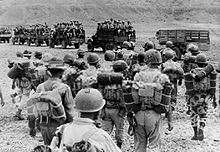
Arab nationalism had an influence in some circles who opposed the lack of modernization efforts in the Mutawakkilite monarchy. This became apparent when Imam Ahmad bin Yahya died in 1962. He was succeeded by his son, but army officers attempted to seize power, sparking the North Yemen Civil War. The Hamidaddin royalists were supported by Saudi Arabia, Britain, and Jordan (mostly with weapons and financial aid, but also with small military forces), whilst the military rebels were backed by Egypt. Egypt provided the rebels with weapons and financial assistance, but also sent a large military force to participate in the fighting. Israel covertly supplied weapons to the royalists to keep the Egyptian military busy in Yemen and make Nasser less likely to initiate a conflict in the Sinai. After six years of civil war, the military rebels formed the Yemen Arab Republic.

The revolution in the north coincided with the Aden Emergency, which hastened the end of British rule in the south. On 30 November 1967, the state of South Yemen was formed, comprising Aden and the former Protectorate of South Arabia. This socialist state was later officially known as the People's Democratic Republic of Yemen and a programme of nationalisation was begun.
Relations between the two Yemeni states fluctuated between peaceful and hostile. The South was supported by the Eastern bloc. The North, however, was not able to get the same connections. In 1972, the two states fought a war. The war was resolved with a ceasefire and negotiations brokered by the Arab League, where it was declared that unification would eventually occur. In 1978, Ali Abdullah Saleh was named as president of the Yemen Arab Republic. After the war, the North complained about the South's help from foreign countries. This included Saudi Arabia.
In 1979, fresh fighting between the two states resumed and efforts were renewed to bring about unification. Thousands were killed in 1986 in the South Yemen Civil War. President Ali Nasser Muhammad fled to the north and was later sentenced to death for treason. A new government formed.
Unification and civil war

In 1990, the two governments reached a full agreement on the joint governing of Yemen, and the countries were merged on 22 May 1990, with Saleh as president. The president of South Yemen, Ali Salim al-Beidh, became vice president. A unified parliament was formed and a unity constitution was agreed upon. In the 1993 parliamentary election, the first held after unification, the General People's Congress won 122 of 301 seats.
After the invasion of Kuwait crisis in 1990, Yemen's president opposed military intervention from non-Arab states. As a member of the United Nations Security Council for 1990 and 1991, Yemen abstained on a number of UNSC resolutions concerning Iraq and Kuwait and voted against the "...use of force resolution." The vote outraged the U.S., and Saudi Arabia expelled 800,000 Yemenis in 1990 and 1991 to punish Yemen for its opposition to the intervention.
In the absence of strong state institutions, elite politics in Yemen constituted a de facto form of collaborative governance, where competing tribal, regional, religious, and political interests agreed to hold themselves in check through tacit acceptance of the balance it produced. The informal political settlement was held together by a power-sharing deal among three men: President Saleh, who controlled the state; major general Ali Mohsen al-Ahmar, who controlled the largest share of the Yemeni Armed Forces; and Abdullah ibn Husayn al-Ahmar, figurehead of the Islamist al-Islah party and Saudi Arabia's chosen broker of transnational patronage payments to various political players, including tribal sheikhs. The Saudi payments have been intended to facilitate the tribes' autonomy from the Yemeni government and to give the Saudi government a mechanism with which to weigh in on Yemen's political decision-making.
Following food riots in major towns in 1992, a new coalition government made up of the ruling parties from both the former Yemeni states was formed in 1993. However, Vice President al-Beidh withdrew to Aden in August 1993 and said he would not return to the government until his grievances were addressed. These included northern violence against his Yemeni Socialist Party, as well as the economic marginalization of the south. Negotiations to end the political deadlock dragged on into 1994. The government of Prime Minister Haydar Abu Bakr Al-Attas became ineffective due to political infighting.
An accord between northern and southern leaders was signed in Amman, Jordan on 20 February 1994, but this could not stop the civil war. During these tensions, both the northern and southern armies (which had never integrated) gathered on their respective frontiers.
Contemporary Yemen

Ali Abdullah Saleh became Yemen's first directly elected president in the 1999 presidential election, winning 96% of the vote. The only other candidate, Najeeb Qahtan Al-Sha'abi, was the son of Qahtan Muhammad al-Sha'abi, a former president of South Yemen. Though a member of Saleh's General People's Congress (GPC) party, Najeeb ran as an independent.
In October 2000, 17 U.S. personnel died after an al-Qaeda suicide attack on the U.S. naval vessel USS Cole in Aden. After the September 11 attacks on the United States, President Saleh assured U.S. President George W. Bush that Yemen was a partner in his War on Terror. In 2001, violence surrounded a referendum, which apparently supported extending Saleh's rule and powers.
The Houthi insurgency in Yemen began in June 2004 when dissident cleric Hussein Badreddin al-Houthi, head of the Zaidi Shia sect, launched an uprising against the Yemeni government. The Yemeni government alleged that the Houthis were seeking to overthrow it and to implement Shī'ite religious law. The rebels countered that they were "defending their community against discrimination" and government aggression. In 2005, at least 36 people were killed in clashes across the country between police and protesters over rising fuel prices. In the 2006 presidential election, Saleh won with 77% of the vote. His main rival, Faisal bin Shamlan, received 22%. Saleh was sworn in for another term on 27 September.
A suicide bomber killed eight Spanish tourists and two Yemenis in the Marib Governorate in July 2007. A series of bomb attacks occurred on police, official, diplomatic, foreign business, and tourism targets in 2008. Car bombings outside the U.S. embassy in Sana'a killed 18 people, including six of the assailants in September 2008. In 2008, an opposition rally in Sana'a demanding electoral reform was met with police gunfire.
Social hierarchy
This section needs additional citations for verification. (April 2021) |
There is a system of social stratification in Yemen that was officially abolished at the creation of the Yemen Arab Republic in 1962, but in practice this system has not disappeared and Yemeni society is still organized around hierarchical ranks. The difference between ranks is manifested by descent and occupation and is consolidated by marriages between people of the same ranks.
There are five status groups. At the top of hierarchy, there are the religious elites, also called sada. These are then followed by the strata of judges (quad). The third hierarchical status is the qaba’il, who are the peasants who belong to tribes and who live mainly from agriculture and trading. The fourth group is called the mazayanah. This group is composed of people who had no land and provide different kinds of services such as butchers and craftsmen. Finally, at the bottom of the hierarchy are the slaves (a’bid) and even further below them Al-Akhdam, which means servants.
Revolution and aftermath
This section needs additional citations for verification. (October 2021) |
The 2011 Yemeni revolution followed other Arab Spring mass protests in early 2011. The uprising was initially against unemployment, economic conditions, and corruption, as well as against the government's proposals to modify the constitution of Yemen so that Saleh's son could inherit the presidency.
In March 2011, police snipers opened fire on a pro-democracy camp in Sana'a, killing more than 50 people. In May, dozens were killed in clashes between troops and tribal fighters in Sana'a. By this point, Saleh began to lose international support. In October 2011, Yemeni human rights activist Tawakul Karman won the Nobel Peace Prize, and the UN Security Council condemned the violence and called for a transfer of power. On 23 November 2011, Saleh flew to Riyadh, in neighbouring Saudi Arabia, to sign the Gulf Co-operation Council plan for political transition, which he had previously spurned. Upon signing the document, he agreed to legally transfer the office and powers of the presidency to his deputy, Vice President Abdrabbuh Mansur Hadi.
Hadi took office for a two-year term upon winning the uncontested presidential elections in February 2012. A unity government—including a prime minister from the opposition—was formed. Al-Hadi would oversee the drafting of a new constitution, followed by parliamentary and presidential elections in 2014. Saleh returned in February 2012. In the face of objections from thousands of street protesters, parliament granted him full immunity from prosecution. Saleh's son, General Ahmed Ali Abdullah Saleh, continues to exercise a strong hold on sections of the military and security forces.
AQAP claimed responsibility for a February 2012 suicide attack on the presidential palace that killed 26 Republican Guards on the day that President Hadi was sworn in. AQAP was also behind a suicide bombing that killed 96 soldiers in Sana'a three months later. In September 2012, a car bomb attack in Sana'a killed 11 people, a day after a local al-Qaeda leader Said al-Shihri was reported killed in the south.
By 2012, there was a "small contingent of U.S. special-operations troops"—in addition to CIA and "unofficially acknowledged" U.S. military presence—in response to increasing terror attacks by AQAP on Yemeni citizens. Many analysts have pointed out the former Yemeni government role in cultivating terrorist activity in the country. Following the election of President Abdrabbuh Mansur Hadi, the Yemeni military was able to push Ansar al-Sharia back and recapture the Shabwah Governorate.
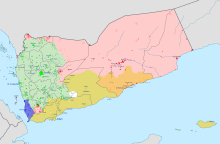
The central government in Sana'a remained weak, staving off challenges from southern separatists and Houthis as well as AQAP. The Houthi insurgency intensified after Hadi took power, escalating in September 2014 as anti-government forces led by Abdul-Malik al-Houthi swept into the capital and forced Hadi to agree to a "unity" government. The Houthis then refused to participate in the government, although they continued to apply pressure on Hadi and his ministers, even shelling the president's private residence and placing him under house arrest, until the government's mass resignation in January 2015. The following month, the Houthis dissolved parliament and declared that a Revolutionary Committee under Mohammed Ali al-Houthi was the interim authority in Yemen. Abdul-Malik al-Houthi, a cousin of the acting president, called the takeover a "glorious revolution". However, the "constitutional declaration" of 6 February 2015 was widely rejected by opposition politicians and foreign governments, including the United Nations.
Hadi managed to flee from Sana'a to Aden, his hometown and stronghold in the south, on 21 February 2015. He promptly gave a televised speech rescinding his resignation, condemning the coup, and calling for recognition as the constitutional president of Yemen. The following month, Hadi declared Aden Yemen's "temporary" capital. The Houthis, however, rebuffed an initiative by the Gulf Cooperation Council and continued to move south toward Aden. All U.S. personnel were evacuated, and President Hadi was forced to flee the country to Saudi Arabia. On 26 March 2015, Saudi Arabia announced Operation Decisive Storm and began airstrikes and announced its intentions to lead a military coalition against the Houthis, who they claimed were being aided by Iran and began a force buildup along the Yemeni border. The coalition included the United Arab Emirates, Kuwait, Qatar, Bahrain, Jordan, Morocco, Sudan, Egypt, and Pakistan. The United States announced that it was assisting with intelligence, targeting, and logistics. After Hadi troops took control of Aden from Houthis, jihadist groups became active in the city, and some terrorist incidents were linked to them such as Missionaries of Charity attack in Aden on 4 March 2016. In February 2018, Aden was seized by the UAE-backed separatist Southern Transitional Council.
Yemen has been suffering from a famine since 2016 as a result of the civil war. More than 50,000 children in Yemen died from starvation in 2017. Numerous commentators have condemned the Saudi-led coalition's military campaign, including its blockade of Yemen, as genocide. The famine is being compounded by an outbreak of cholera that has affected more than one million people. The Saudi Arabian-led intervention in Yemen and blockade of Yemen have contributed to the famine and cholera epidemic. The UN estimated that by the end of 2021, the war in Yemen would have caused over 377,000 deaths, and roughly 70% of deaths were children under age 5.
On 4 December 2017, deposed strongman and former president Ali Abdullah Saleh, accused of treason, was assassinated by Houthis whilst attempting to flee clashes near rebel-held Sana'a between Houthi and pro-Saleh forces. After losing the support of the Saudi-led coalition, Yemen's President Abd Rabbuh Mansur Hadi resigned, and the Presidential Leadership Council took power in April 2022.
Following the outbreak of the 2023 Israel–Hamas war, the Houthis began to fire missiles at Israel and attack ships off Yemen's coast in the Red Sea, which they say is in solidarity with the Palestinians and aiming to facilitate entry of humanitarian aid into the Gaza Strip.
In June 2024, the UAE-backed STC were putting pressure to lease the Aden International Port to Abu Dhabi Ports. The move was opposed by the Parliament and the public. A joint statement by 24 members of Shura Council expressed categorical rejection of the lease agreement. Economists said the Emirates was attempting to control the Aden Port and limit its activities, in order to keep its own ports active. Governor of Aden, Tariq Salam also said the lease attempt aims to devalue the Aden Port and take its international maritime status. Aden International Port had ended its agreement to manage two container terminals with Dubai Ports World in 2012, due to economic decline and failure to fulfill commitments.
Geography

Yemen covers 455,000 km (175,676 sq mi) and is located at the southern part of the Arabian Peninsula. It is bordered by Saudi Arabia to the north, the Red Sea to the west, the Gulf of Aden and Guardafui Channel to the south, and Oman to the east.
Several Red Sea islands, including the Hanish Islands, Kamaran, and Perim, as well as Socotra in the Arabian Sea, belong to Yemen; the largest of these is Socotra. Many of the islands are volcanic; Jabal al-Tair Island had volcanic eruptions in 1883 and 2007. Although mainland Yemen is in the southern Arabian Peninsula and thus part of Asia, and its Hanish Islands and Perim in the Red Sea are associated with Asia, the archipelago of Socotra, which lies east of the horn of Somalia and is much closer to Africa than to Asia, is geographically and biogeographically associated with Africa.
Regions and climate

Yemen can be divided geographically into four main regions: the coastal plains in the west, the western highlands, the eastern highlands, and the Rub' al Khali in the east. The Tihamah ("hot lands" or "hot earth") form a very arid and flat coastal plain along Yemen's entire Red Sea coastline. Despite the aridity, the presence of many lagoons makes this region very marshy and a suitable breeding ground for malaria-borne mosquitos. Extensive crescent-shaped sand dunes are present. The evaporation in the Tihamah is so great that streams from the highlands never reach the sea, but they do contribute to extensive groundwater reserves. Today, these are heavily exploited for agricultural use.
Near the village of Madar about 50 km (30 mi) north of Sana'a, dinosaur footprints were found, indicating that the area was once a muddy flat. The Tihamah ends abruptly at the escarpment of the western highlands. This area, now heavily terraced to meet the demand for food, receives the highest rainfall in Arabia, rapidly increasing from 100 mm (3.9 in) per year to about 760 mm (29.9 in) in Taiz and over 1,000 mm (39.4 in) in Ibb. Temperatures are warm in the day but fall dramatically at night.

The central highlands are an extensive high plateau over 2,000 m (6,562 ft) in elevation. This area is drier than the western highlands because of rain-shadow influences, but still receives sufficient rain in wet years for extensive cropping. Water storage allows for irrigation and the growing of wheat and barley. Sana'a is in this region. The highest point in Yemen and Arabia is Jabal An-Nabi Shu'ayb, at about 3,666 m (12,028 ft).
Yemen's portion of the Rub al Khali desert in the east is much lower, generally below 1,000 m (3,281 ft), and receives almost no rain. It is populated only by Bedouin herders of camels.
Biodiversity
Yemen contains six terrestrial ecoregions: Arabian Peninsula coastal fog desert, Socotra Island xeric shrublands, Southwestern Arabian foothills savanna, Southwestern Arabian montane woodlands, Arabian Desert, and Red Sea Nubo-Sindian tropical desert and semi-desert. The flora is a mixture of the tropical African, Sudanian plant geographical region and the Saharo-Arabian region. The Sudanian element—characterized by relatively high rainfall—dominates the western mountains and parts of the highland plains. The Saharo-Arabian element dominates in the coastal plains, eastern mountain, and the eastern and northern desert plains.
A high percentage of Yemen plants belong to tropical African plants of Sudanian regions. Among the Sudanian element species, the following may be mentioned: Ficus spp., Acacia mellifera, Grewia villosa, Commiphora spp., Rosa abyssinica, Cadaba farinosa and others. Among the Saharo-Arabian species, these may be mentioned: Panicum turgidum, Aerva javanica, Zygophyllum simplex, Fagonia indica, Salsola spp., Acacia tortilis, A. hamulos, A. ehrenbergiana, Phoenix dactylifera, Hyphaene thebaica, Capparis decidua, Salvadora persica, Balanites aegyptiaca, and many others. Many of the Saharo-Arabian species are endemic to the extensive sandy coastal plain (the Tihamah).
Among the fauna, the Arabian leopard, which would inhabit the mountains, is considered rare here.
